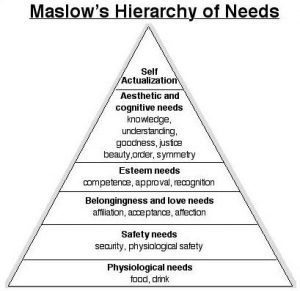Schools in the 21st century look a lot like schools of the 20th century. The classroom setup, with the desks in rows, and the teacher lecturing at the front of the class is still quite common. The types of courses and the daily schedule of schools has remained quite standard throughout this time period. But looks can be deceiving. Schools might look the same, the pedagogical methods might not have changed much, and students might sit in the standard “desks in rows” format but schools have changed in numerous ways and these changes are indicative of the changing world we live in and the massive impact it is having on the students that cross the threshold of our schools today.
When you walk in schools today you will see a number of things that you would not see 40, 50, 60 years ago. Nowadays you see breakfast and lunch programs, washers and dryers for students to wash and dry clothes, calming rooms, school counsellors, drug and alcohol counsellors, security/police officers, metal detectors, etc. The educational systems throughout North America, and many parts of the world, have become more than just institutions of information transmission. They are becoming one of the most important insertions, or places, for our nations children. They are safe havens, they are places where students can access professional help, they are places where they get fed and clothed. They have, in many cases, the most important, and safest place for many our nations children.
Many people still deem schools as places where children merely learn the ABC’s, history, math, etc. Schools are much more than this. All one has to do is walk through the hallways of our schools and you will quickly realize that schools are not the same as schools in the past. Students are now coming to schools hungry, unkempt, mentally drained, traumatized, academically unprepared, and with a plethura of mental health concerns. Abraham Maslow, an American psychologist that created his ‘Hierarchy of Needs’ reveals that students have to a number of needs met to properly Some of these needs are food, drink, security, acceptance, affection, affiliation, etc. If a number of these needs are not being met within the family then many students are coming to school in state that is non-conducive to learning.
In the past thirty years the ‘nuclear family’ that existed for generations in North America has disintegrated. More families are breaking up. More kids are being raised by one parent, two parents living in different homes, foster parents, group homes, and other situations. More kids are living in poverty. More kids are homeless. More and more students are coming to school well below the grade level they are assigned to. More and more kids are being raised in situations where drugs, alcohol, violence, and trauma exist on a daily basis. These are the students that are walking through the doors of schools throughout North America. These are the students that are sent to schools to learn. These are the students that teachers, admin, counsellors, etc are working with on a daily basis.
The disintegration of the traditional home life has created a plethora of problems for the educational system. For a system entrusted in the passing on of knowledge things have changed dramatically. Now society expects schools to do much more. Now they are expected to clothe, feed, assess kids and provide resources, provide counselling, etc. They must also work with students dealing with a plethura of mental health concerns, trauma, and other psychological issues. Teaching is a hard profession. It takes a lot of energy, commitment, passion, knowledge, and expertise. Add on all these other issues and expectations you create a insurmountable and problematic situation. But this is the situation many schools face on a daily basis. They, the professionals within schools. are entrusted to teach but they do much, much more. They have taken on the role of parent, caregiver, friend, guide, etc for the students in their schools. But is this an effective or achievable task to ask of schools? Can schools accomplish this task? Should schools be the institution to have to take on these roles within society? Will this situation worsen in the future? And if so will our current system be able to handle the students that cross through the front doors of the schools?
